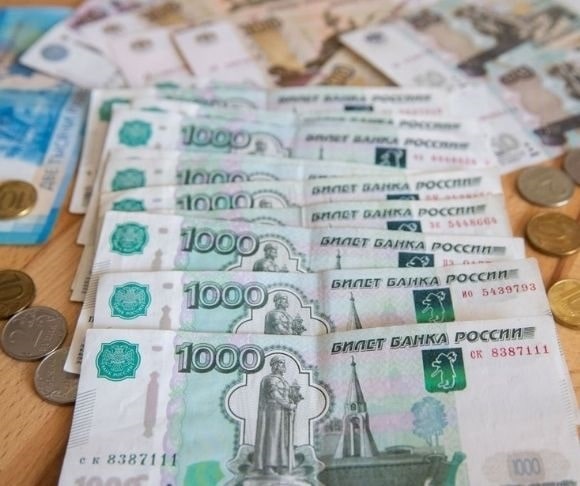President Vladimir Putin recently announced that Russia would sell its petroleum products to “unfriendly” countries, but only in exchange for rubles. This move to promote Russia’s own currency, rather than settling transactions in dollars and euros, led to widespread speculation of supply disruptions in Western nations, while also lifting the ruble’s value to its pre-invasion level. Over the last week, the ruble has rallied about 13% against the greenback and roughly 12% against the euro.
Put simply, Russia will turn off the taps if European nations do not pay for their fuel imports in rubles.
Will Europe Acquiesce to Russian Demand?
G7 countries told companies not to agree to Putin’s request, adding that most supply contracts are already stipulated in the two Western currencies. The European Commission is also assessing the situation as the trade bloc attempts to transition away from Russian energy. The region imports approximately 40% of its oil and gas needs from Moscow.
European Union gas inventory levels are only 26% full. Earlier this month, EU leaders proposed a mandate to require that member nations fill their storage to at least 80% by the end of the year. But early estimates suggest that EU stocks would only be 23% by Oct. 1 if everyone stopped purchasing Russian energy. Europe plans to import more liquefied natural gas (LNG) from the US, totaling 50 billion cubic meters by 2023. This would represent about one-third of the EU’s imports from Russia, falling short of supplies to keep the lights on and homes heated.
To Russia with Gold

(Photo by Bai Xueqi/Xinhua via Getty Images)
Putin has been acquiring a broad array of assets since the start of the military conflict in Ukraine, buying everything from platinum to diamonds to cryptocurrency to rare earth metals. The Russian central bank has restarted buying gold from financial institutions, and it will continue to do so until June 30. Moscow intends to pay a fixed price of $52 per gram, equal to about 5,000 rubles. Officials note that the continuation would facilitate sustainable supplies and maintain the functioning of gold producers. But, at least for now, Russia would be unable to sell its holdings since the US Treasury recently closed this loophole and essentially made it illegal to purchase gold from Moscow through sanctions.
The White House estimates that at least one-fifth of the Eurasian nation’s current reserves are in gold, totaling about $120 billion. Could this mean that the next step is to link the ruble to the yellow metal? There has been speculation that the Kremlin would initiate this strategy in recent weeks, making the ruble the first gold-backed currency in decades. Some say that Moscow’s decision to buy a gram of gold for 5,000 rubles achieves this aim of gold bugs everywhere. However, unless the ruble is redeemable in silver, it is still fiat and, therefore, not backed by anything. In other words, Russia can still print money and not be beholden to a commodity-based standard.
But Putin still kills two birds with one stone. Russia is partaking in a sound decision by accumulating real assets, like gold and platinum. By maintaining this strategy since the annexation of Crimea, Russia has averted the blunt instruments of sanctions and restrictions, effectively undermining the US dollar hegemony by still engaging in non-dollar cross-border transactions.
China’s Opium Trade
In the 18th and 19th centuries, Great Britain and China engaged in the lucrative opium trade, leading to addiction problems across Chinese society. Because European merchants paid for Chinese products with silver as part of efforts to resolve a trade imbalance, the Asian country enjoyed a treasure trove of the white metal. However, since the country imported immense volumes of opium, silver started to trickle out of China so addicts could satisfy their appetite for the narcotic. While the world does not engage in metal-denominated trade anymore, certain countries that maintain a stranglehold over their trade partners can make similar demands to ensure their currencies survive and potentially thrive in a highly volatile economy.
Could the same thing happen in today’s hostile relationship between Russia and the Western world? For now, it does not seem likely, but desperate times call for desperate measures.
The Power of Gold
Remember, gold, be it South African Krugerrands or Canadian Maple Leaf coins, is real money, a viable currency, and independent of SWIFT and the international monetary order. Even if countries keep their fiat monopoly intact, Moscow’s renewed gold infatuation reminds everyone that they should own at least some gold in their portfolios. Unfortunately, even in a so-called Bretton Woods III empire, a modern-day gold standard would not be adopted, mainly because there is too much debt in worldwide markets, making it impossible to cover these obligations. An enhanced and accelerated anti-dollar movement, however, is a more likely scenario moving forward. In fact, the world’s collective response to the Ukraine invasion probably has Putin wishing he bought even more.
~ Read more from Andrew Moran.




